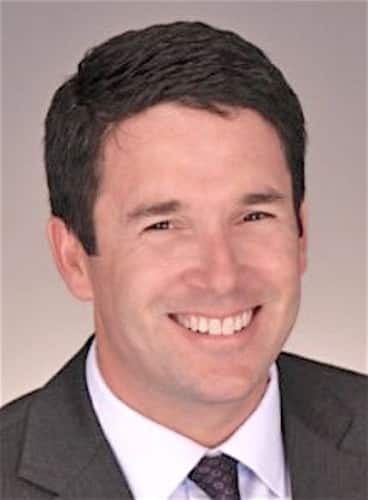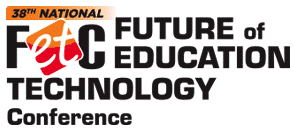A noted analyst sees a seismic shift in how higher ed does business Hear more from Trace Urdan and other innovative analysts, thought leaders, and educators at the 2018 Future of Education Technology Conference (FETC), January 23-26 in Orlando, Florida. Learn more here.
 Trace Urdan is an expert in the world of for-profit education. For nearly 20 years he has been a much-quoted and cited observer and analyst of the education market, following and analyzing companies in all sectors of education from early childhood to K-12 and postsecondary.
Trace Urdan is an expert in the world of for-profit education. For nearly 20 years he has been a much-quoted and cited observer and analyst of the education market, following and analyzing companies in all sectors of education from early childhood to K-12 and postsecondary.
When I spoke with Trace recently, one of the topics we discussed at length was the dramatic changes occurring in higher education and the reaction from colleges and universities. Higher education institutions are suffering from a downward trending enrollment, and Trace says it is a combination of demographics and math. There are many paths and plans and solutions that colleges and universities are exploring and many possible solutions that they are choosing to adapt to survive.
“The number of 18-to-22-year-olds that are coming into the post-secondary system has flattened,” Trace said, “And those 18-to-22-year-olds have become much less affluent than that demographic has been historically. This is just a fact of life that colleges and universities have to live with.”
We discussed how some struggling colleges are rethinking their brand and their offerings. Being broad-based learning institutions in the Harvard model, offering a wide variety of majors emphasizing comprehensive critical thinking, is no longer affordable to many schools outside the top elite. A rethinking is underway as to how to financially stay afloat while attracting potential students. As a consequence, institutions are beginning to narrow their focus on fixed areas of study to attract specific students with intensive learning environments that prepare them for good paying jobs when they graduate.
Interview
Dr. Berger: Trace, it’s really nice to be spending some time with you today. We’ve spoken in the past, and I’ve found you to be one of the most thoughtful analysts of education out there with your deep knowledge of early childhood education all the way up through higher education. So it’s a real privilege to be speaking with you today.
Trace Urdan: Thanks, Rod. I’m happy to be doing it.
DB: There are a number of different sectors of education I’d love to discuss with you. First, give us an idea of where education is. I think that as general knowledge, people are aware that education is around the second or third largest sector of the global economy. Are we still there? What is the state of the union of the education sector as you see it from your seat?
 TU: It’s a very large and eclectic part of the economy. One of the things that intrigues me about looking at the private sector in education is the role that private capital plays specifically to spur innovation. Most people ─ when they think about education ─ tend to think about public education institutions, and that’s right. That’s where most of the dollars are spent.
TU: It’s a very large and eclectic part of the economy. One of the things that intrigues me about looking at the private sector in education is the role that private capital plays specifically to spur innovation. Most people ─ when they think about education ─ tend to think about public education institutions, and that’s right. That’s where most of the dollars are spent.
The government is a pretty good consumer in the economy in a lot of respects, but what the government doesn’t do particularly well is invest in and put capital aside for innovation. That’s something that the private sector is quite good at.
So when you look at a lot of the things that are exciting in the world of education today, I think a lot of those have come from the private sector.
When I think about the general state of education at the moment, there’s always a lot that changes and things that people are anxious about… particularly if they’re looking at it from a national perspective and they’re trying to think about “Are we competitive? Is the state of education sufficient to continue to drive our economy going forward?”
A lot of people are worried, and probably rightly so, about automation and artificial intelligence and questioning if we’re teaching young people ─ and, by that, I mean everybody from K-12 up through higher education ─ the right skills that are going to allow them to continue to be competitive in the future.
There’s always lots going on there. When I think about the private sector’s role specifically in education, I think it’s probably as vibrant as it’s ever been. There’s been a ton of investment in early-stage education. There’s a lot of excitement around Ed Tech.
I don’t know if all of that excitement is going to necessarily be borne out, but a lot of it will be. There’s a lot of excitement or interest in investment in what people sometimes call “last mile programs.” There’s this perception that there are gaps right now between what formal education is accomplishing and what the working world expects, and these programs are designed to fill in those gaps.
There are a lot of private investment dollars that have gone into trying to help people bridge those gaps and acquire the skills that they need to be more useful in the employment market. I think that’s an exciting area.
Then, when you think about it globally, I think one of the most exciting areas is just how much post-secondary education is poised to grow in emerging economies. We’ve seen a lot of growth in Latin America in the last couple of years. There are a lot of exciting things happening in the Middle East and Asia, and I think ten years from now, we’ll be talking about the exploding post-secondary education systems and programs in Africa.
There’s such a strong tie between GDP per capita growth and post-secondary or tertiary education that there’s such a great need for it in developing regions. And, again, it’s a need where the private sector can be really helpful with.
I think that there will continue to be a lot of opportunities for investment. There are a lot of things that are interesting about what the private sector is doing in education.
But the topics are all different ones than we would have talked about maybe five or ten years ago. It continues to evolve.
DB: Touching on that point around investment, I’m very curious as to how you would frame this out: I think what’s interesting is that we will have all of these topics come up from the educational practitioner side of it with areas of focus, and literacy is one of them. Now we’re seeing that splinter off into media literacy, digital literacy, and all of these different permutations of the term “literacy.”
Help the audience understand the response from the investment community when something basically pings the meter or when the radar is going off, and education says, “We need to focus on “x” and we need solutions.”
How do we fill in that gap from when the investment communities say, “Yes, that’s an opportunity we would like to invest in that” and those on the innovation side say, “We have technologies that can support that”?
 TU: It’s a good question. I think one of the things that people are, sometimes, dissatisfied about ─ and maybe rightly so ─ is that there’s often a gap between what researchers are focused on, what practitioners are focused on, and what entrepreneurs are focused on.
TU: It’s a good question. I think one of the things that people are, sometimes, dissatisfied about ─ and maybe rightly so ─ is that there’s often a gap between what researchers are focused on, what practitioners are focused on, and what entrepreneurs are focused on.
In a perfect world, there’s this wonderful circle of information and everybody is working on the right thing. But those groups don’t interact nearly as often as they should.
So you have entrepreneurs who are working up ideas that don’t necessarily have a solid foundation in research or don’t have a solid foundation in practice, but they build something and they try to shove it out to the classrooms. And then they find that the classroom teachers say, “Well, that’s a nice idea but here are the fifteen reasons why it doesn’t really make any sense on a practical basis.”
I think one of the things that’s true is that there is more receptivity to younger ed tech companies because you have more digital literacy on the part of young teachers in the classroom, and they’re the same generation growing up with the same tools and experiences. So that’s helping to improve that level of dialogue.
All those groups are operating independently. It’s not quite a situation where the research and practice community issues clear marching orders to entrepreneurs who run to the laboratory and come up with a product to respond to a teacher’s wishes or whims. It’s an iterative thing. Sometimes, entrepreneurs build things they think are cool that teachers don’t need; and, sometimes, there are lots of things that teachers really need that they just can’t get entrepreneurs to build.
It’s a messy process, to be sure, but I don’t feel like there are any large topics that aren’t getting tackled. The University of Pennsylvania Graduate School of Education has an annual competition that they run with Michael Milken’s foundation and they, basically, solicit business plan ideas for a competition.
I’ve been reviewing those for a number of years. That’s exactly the kind of place where you see these trends and you see the things that everybody is talking about, and then you see people come up with business plans to try to address them.
For many years it was STEM; for the last several years, I’ve seen people trying to respond to the perception that there’s a general need for more coding skills and that there’s a general need to promote coding ability among girls and to encourage girls to consider careers in STEM. I do feel like there is a dialogue out there. It’s not perfect.
I think the other place where you see it played out a lot of times is the things that schools or society or even researchers feel would be advantageous for students to learn but because of things like state standards and the regimented nature of the school day, it’s really hard for schools to tackle. And that is a place where entrepreneurs can really respond.
You look at a company like EVERFI that is teaching all the things that everybody agrees that students need more of. You mentioned all the literacies; they teach digital literacy, they teach financial literacy, they teach drug and alcohol awareness ─ all these things that people believe we need more of but the schools are really not equipped to offer because a.) they may not have the expertise and b.) because they just don’t necessarily have the time in the school day or the funding to promote it.
 You have a company like EVERFI that’s figured out, “Hey, there are a lot of corporations and foundations that want to do something good but have a hard time interacting with the public school system so they can fund some of these programs.” So, these programs get offered to kids sponsored by a third party.
You have a company like EVERFI that’s figured out, “Hey, there are a lot of corporations and foundations that want to do something good but have a hard time interacting with the public school system so they can fund some of these programs.” So, these programs get offered to kids sponsored by a third party.
To me, it’s just one example, but it’s a great example of where the private market can find solutions to things that are sometimes problematic in the public sphere because government can get sort of sticky sometimes when you try to get them to respond to things.
DB: Trace, do you find that public education is softening their attitude to public-private partnerships? It seems that there’s a bit of a crack in that wall where people and companies are getting more opportunities and it’s now an acceptable topic to have at board meetings between superintendents.
TU: I do believe that’s true. And it isn’t only in the K-12 sphere. I think this is a big deal in higher education right now where you see a whole range of private companies that are partnering with public institutions and large not-for-profit institutions to bring online courses, to help pathways programs to help foreign students to be more successful in higher education, and even to help with issues like retention and persistence and counseling. Yes, I think there’s definitely more openness to public-private partnerships.
It’s ironic, in a way, because I think there’s also a lot more skepticism around private operators and schools. To some extent, not to be a Pollyanna about this, but what we might be seeing now is a more skeptical and informed consumer in schools. We’ve gone through an early iteration of a lot of private companies getting involved in schools and having outcomes that didn’t go the way people wanted them to. Whether you’re talking about Edison schools or something at the K-12 level or you’re talking about some of the for-profit post-secondary companies that people have problems with.
Now, we’re almost coming up on a new generation where I think there’s a much more balanced relationship between the public providers of education and their private partners.
It’s still not all hearts and flowers necessarily, but I do feel like we’re learning as we go and you’re seeing an iteration that is a little bit healthier and more constructive than some of the past versions of this that we’ve seen.
DB: Let’s talk a little about education policy and politics in general. We’re nine months into a new administration. I think that sometimes it’s not exactly understood at the community level what the actual impact the federal government has on a local school. When there’s a change in the White House and at the U.S. DOE, what do you look for? What are some signs that might be indicative of some of the things to come?
 TU: Sure. That’s a fair question. The percentage of the budget that comes from the federal government in a typical school is relatively small. It’s usually in the single-digit range. They sometimes exercise a disproportionate influence, though, because at the margin those dollars can be important. If all of the state and local funds are consumed with the things that schools HAVE to spend money on, the federal dollars can be spent on the things that are more distinctive and stand out. The federal government always had sort of an out-sized influence as a result of that.
TU: Sure. That’s a fair question. The percentage of the budget that comes from the federal government in a typical school is relatively small. It’s usually in the single-digit range. They sometimes exercise a disproportionate influence, though, because at the margin those dollars can be important. If all of the state and local funds are consumed with the things that schools HAVE to spend money on, the federal dollars can be spent on the things that are more distinctive and stand out. The federal government always had sort of an out-sized influence as a result of that.
With this administration, what you’re seeing is a much more laissez-faire approach. They are now in the process of administering a new version of the elementary and secondary education act where every student’s feedback is the new version of “No Child Left Behind.” That preceded the current administration, but people are watching to see how they’re choosing to administer that in this administration. And what you’re seeing is much more laissez-faire attitude.
In the prior administration, the Obama administration, they used their leverage to promote some very specific ideas about what they thought would be positive in schools and that led, to some extent, to the accusation that the Common Core curriculum was something that the federal government was promoting even though its genesis was an independent consortium of states. But people feel like it was a federal program because they were using those excess federal dollars to encourage states to pursue the Common Core.
So you have a reaction against that. Now what we are seeing is an attempt by the Department of Education to try to push decision making down to states and localities. Philosophically, they’re trying to have less of an opinion about the right way to do things from the federal level.
That causes concerns among people who feel like the federal government is uniquely positioned to address specific issues, set specific policies, or address concerns.
That dynamic is definitely in play, but for the most part, the federal government and the Department of Education have not really had that much of an impact on local schools. And I think that with this administration, you’re going to see that low impact even more so.
Likewise in the higher education side, it’s very much a laissez-faire approach. To the extent that there’s been an agenda so far, it’s been mostly trying to unwind things that the Obama administration put into place or simply rethink things.
The regulations that seemed to be pretty pointedly directed at the for-profit post-secondary folks who caused all the problems are being either tabled or paused. There’s a whole new negotiated rulemaking process that’s been proposed to rework some of those regulations, and that has people concerned.
In the area of Title IX, you see the administration deciding that they want to relax the rules to some extent that the previous administration put in place, and they seemingly want to give institutions more of ability to exercise control there.
I think that this is a pendulum to some extent, and we’re seeing the pendulum swing back the other way.
There was a lot of concern that there were going to be a lot of cuts to the budget, but as we’ve seen that budget make its way through Congress most of the cuts that were promoted in the administration’s version of the budget have been taken out.
So for the most part, in terms of the amount of federal dollars that are spent on education, I don’t expect we’re going to see a big change. Again, I think what you’re going to see over the four years of this administration is a much more diffused and less pointed approach to directing policy ─ certainly at the K-12 level and I think even at the postsecondary level ─ and depending on whether you thought the previous policy direction was good or not, that’s going to be seen as either positive or negative depending on this approach.
But, basically, philosophically, you have a Department of Education that doesn’t want to be there. So they’re backing away from everything. Mostly that has also manifested itself in just the fact that there are still a lot of open roles in the DOE that haven’t been filled. That seems to be a standard feature and not a temporary bug if you talk to the folks who are working on filling those positions. They don’t seem to be nearly as alarmed about the vacancies and holes as some of the people who look at policy and are focused on this stuff.
DB: Trace, if we look at higher ed, the public has this perception that there are a lot of people who are scrambling to figure out what the model is going to be and they’re basically operating on the fly. Give us a forecast for higher education. Tell us the things that give you pause for concern and those signs of hope that say to you what’s being done is positive when we’re looking at brick and mortar versus online, MOOC, etc. etc.
 TU: There are enormous pressures on the current higher education system and they’re really structural. You have rising costs, and we’re reaching the upper limit of the consumers’ ability to come up with actual cash to pay for those costs.
TU: There are enormous pressures on the current higher education system and they’re really structural. You have rising costs, and we’re reaching the upper limit of the consumers’ ability to come up with actual cash to pay for those costs.
This is really starting to put enormous pressure on post-secondary institutions. One of the main drivers of that pressure is just simply the amount that higher education costs are eating into a household’s budget, but also a big part of the pressure is demographics. The number of 18-to-22-year-olds that are coming into the post-secondary system has flattened, and those 18-to-22-year-olds have become much less affluent than that demographic has been historically. This is just a fact of life that colleges and universities have to live with.
On top of that, when you look at public institutions the appetite for states to keep pace with regional and national competition has fallen… so you have less and less public funding. There is a greater pressure on them every day. Every day it seems there’s a different headline from a different state legislature about education costs and focus. There’s a desire by states, business, and students for colleges to be much more pre-professional, to do much more of the heavy lifting in terms of training students for employment.
A lot of educators don’t see that kind of pre-professional role as their main role. They’re interested in teaching critical thinking skills, but more and more you have legislators and even consumers who are saying, “Well, never mind the critical thinking skills. You need to teach me how to program so I can get a job.”
So there are all these tensions and pressures on the higher education system in place. Part of what that has started to lead to ─ and I think we’re going to see more of, which is unfortunate ─ is consolidation. There are some schools that won’t be able to make it. They just don’t have enough of an endowment, they don’t have enough natural demand… so you’re going to see schools close. You’re going to see schools merge. That’s happening more and more.
But to me the silver lining in that process is that we’re starting to get to a place where schools are finally appreciating that they can’t all be sort of miniature clones of Harvard. They’re not all going to be trying to have a wide range of very high-caliber offerings across a whole range of subjects areas to try to attract the very best and the most talented and most affluent students they can. That strategy is available to a relatively small number of elite schools and it’s more and more challenging for schools that are in the middle or less selective to be able to pull off that exclusivity.
So what you’re starting to see is that those schools are starting to ask themselves really hard questions like “What are we really good at? Which types of students do we serve well? Which types of students do we not serve well?”
You see this in the example of Sweet Briar College─ and I don’t know if this is going to work or whether this happened too late in their issues, but that was a school in danger of closing. They appealed to their alumni and got a stay of execution with some additional donated funds and then they really revamped their positioning in the market.
They dropped their prices. They narrowed their focus. They picked two or three things that they think really define their brand, things they can articulate clearly in the marketplace, and they stopped trying to look like every other kind of school out there. They really tried to hone in on, “Okay, what can we do in the market that’s going to be uniquely appealing, that’s going to allow us to survive?”
In all of this pressure, in all of this consolidation, I do see that those kinds of market pressures are forcing schools to make tougher choices and to be much more clear headed about what they can and will bring to the table. And I think of that being positive.
 I mentioned the public-private partnerships before. I do think that part of this pressure that they’re feeling is leading them to be more willing to work with private partners and to have that discussion about “What’s our core competency? What are we good at? What’s core to our mission of who we are and what isn’t necessarily core to our mission? What can we effectively outsource to somebody who’s better at that kind of thing than we are?”
I mentioned the public-private partnerships before. I do think that part of this pressure that they’re feeling is leading them to be more willing to work with private partners and to have that discussion about “What’s our core competency? What are we good at? What’s core to our mission of who we are and what isn’t necessarily core to our mission? What can we effectively outsource to somebody who’s better at that kind of thing than we are?”
I think that’s going to lead some schools to be more efficient and, hopefully, get to a place where they can start to manage their costs a little better.
A lot of them are prompted by these pressures to get programs into the online market and I think that’s allowed online education to thrive and become much more acceptable. There’s a lot more careful attention and innovative thought being placed into building online programs and making them better. I think that’s a positive force that’s going to allow more schools to help more people in a higher quality way. And I think of that as a constructive development.
Yes, there are a lot of things that are happening that I think are positive and are going to make our higher education system stronger going forward. But there’s no question that it’s tough to be a college or a university, and it’s even tougher to be a non-elite college or university right now.
About Trace Urdan:
 Trace Urdan has followed the Knowledge Services market as an equity research analyst for more than 18 years, during which time he has held senior research positions at a number of firms including ThinkEquity, Robert W. Baird, Signal Hill Capital Group, Wells Fargo Securities, and most recently as a Managing Director at Credit Suisse. After holding senior management positions within Time Inc. and KPMG Media Marwick, Trace began his career as a research analyst in 1998 with Alex. Brown & Sons, covering publishing and education.
Trace Urdan has followed the Knowledge Services market as an equity research analyst for more than 18 years, during which time he has held senior research positions at a number of firms including ThinkEquity, Robert W. Baird, Signal Hill Capital Group, Wells Fargo Securities, and most recently as a Managing Director at Credit Suisse. After holding senior management positions within Time Inc. and KPMG Media Marwick, Trace began his career as a research analyst in 1998 with Alex. Brown & Sons, covering publishing and education.
During his career, he has followed a wide range of companies serving the education market including early childhood, K-12, higher education and employment training. He is widely-cited as an expert on the topics of for-profit education, education technology and education policy. In 2011 he authored a white paper for the Kauffman Foundation on the topic of higher education regulation. In 2008 he was cited by Career College Central magazine as one of the 25 most influential people in the career college sector. And in 2005, he testifIed before the Spellings Commission on the Future of Higher Education. Trace received a BA degree from Yale University and an MBA from Harvard Business School. Follow Trace on Twitter.
 Trace Urdan will be speaking at the upcoming Future of Education Conference (FETC) January 23-26 in Orlando, Florida.
Trace Urdan will be speaking at the upcoming Future of Education Conference (FETC) January 23-26 in Orlando, Florida.
AuthorDr. Berger is one of many industry education correspondents for the Mind Rocket Media Group, An educator and former school administrator. His video interview work and conversational podcasts have been featured in various media outlets. He often hosts education panel discussions and develops strategic content. As an academic Dr. Berger is a guest lecturer at Vanderbilt University’s Owen Graduate School of Management. A former assistant principal, he has been an adjunct undergraduate professor and developer of online college courses. He is a passionate Detroit sports fan who has also adopted Nashville sports teams as his own.
Contact the Mind Rocket Media Group if you are interested in an industry interview and a placement on EdCircuit.
Further Reading
- The Atlantic – The Rural Higher-Education Crisis
- The Sacramento Bee – This local college program connects students with $18-an-hour jobs in little time
- edCircuit – EVERFI Supports the 14th National Prescription Drug Take Back Day


